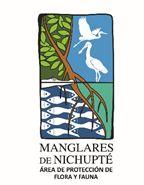
Restoration of degraded mangrove ecosystems
Full Solution

The mangroves of Nichupté
CONABIO
The mangrove stands of Nichupté Lagoon have been chronically stressed due to degradation and pollution associated with coastal development and tourism infrastructure, reducing the resilience of the mangrove ecosystem to disturbances such as hurricane Wilma that degraded large mangrove areas as well as adjacent reef formations. To support the recovery of the mangrove ecosystem, the National Commission of Natural Protected Areas (CONANP) began to implement restoration and conservation activities.
Last update: 08 Feb 2022
7603 Views
Context
Challenges addressed
loss of biodiversity & ecosystem services, degradation & pollution, impacts of hurricanes
Location
Quintana Roo, México
North America
Process
Summary of the process
tba
Building Blocks
Determination of stressors
Experts determine the type and degree of damage and identify the causes of mangrove loss such as changes in temperature, water pollution, hydrological modifications and sedimentation. This helps decision makers develop site specific restoration and reforestation plans.
Enabling factors
tba
Lesson learned
tba
Stakeholder engagement
A diverse array of stakeholders is engaged: academia provides scientific baseline data, civil society organisations contribute private funds, and government facilitates implementation and evaluation processes and local communities pitch in by conducting field work.
Enabling factors
tba
Lesson learned
tba
Dissemination and training
The results of the monitoring programme are presented to the relevant local communities and through academic channels. Environmental education campaigns focus on local populations and address people with different levels of education. Information is shared via presentations, courses, trainings and workshops.
Enabling factors
tba
Lesson learned
tba
Mangrove ecotourism
In »jungle tours«, tourists are guided through the channels of the mangrove forest by boat. The trip includes environmental education and allows visitors to experience the interconnectedness of adjacent ecosystems such as mangroves and coral reefs.
Enabling factors
tba
Lesson learned
tba
Mangrove restoration and monitoring
Restoration measures – including the reforestation of degraded mangrove areas with native species, the restoration of hydrological conditions and the removal of invasive exotic species – are implemented and the effects of these efforts continuously monitored.
Enabling factors
tba
Lesson learned
tba
Impacts
- Recovery of vegetation cover and return of fauna
- Restoration of ecosystem and environmental services
- Environmental education and raised awareness of community members who have been involved in the field work. This field work included e.g. the joint collection and analysis of information on the causes and effects of invasive species in the ecosystem. Seeing environmental issues in the field, community members experienced the impacts and its effects, supporting a change of mind on their behavior.
Beneficiaries
local fishermen and tourism operators as well as the entire local population depending on protection from natural disasters
Story
»The restoration of degraded mangrove areas demands personnel and professional
commitment. Working under extreme conditions in the mud while trying to achieve
not only the technical project objectives but also to inspire others to do so was not
an easy task,« states Teresa Patricia Santos Gonzáles, Head of Department at the
Área de Protección de Flora y Fauna Manglares de Nichupté.
»The results, however, have made our efforts worthwhile. Databases and graphs of
the monitoring results and pictures taken before and after the project‘s implementation
phase indicate the recovery of the mangrove cover – and the survival and
growth of reforested individuals with an average survival of more than 89 per cent,
as well as returning local mangrove fauna. And I can conclude that even though
the field work was hard, I fell in love with this muddy ecosystem.«






